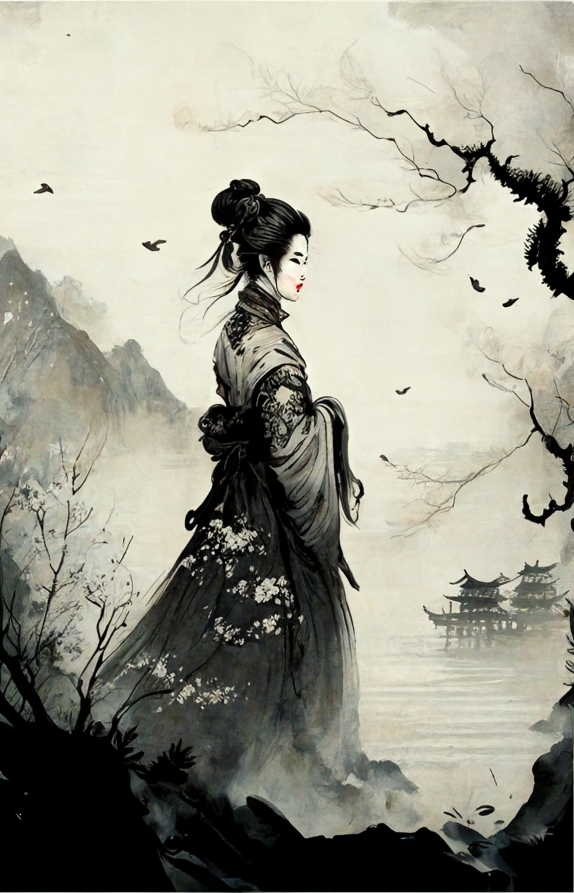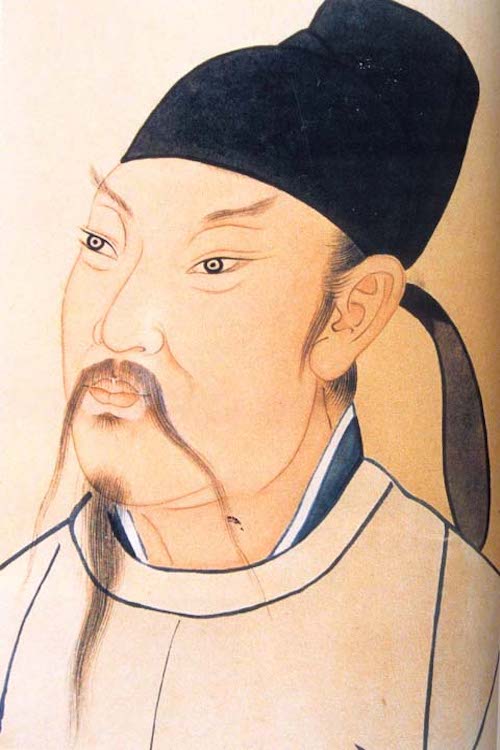
In robes of cloud, her beauty like a rare bloom,
The spring’s soft zephyr doth her loveliness resume.
Is she not a goddess from the sacred peak,
Or a heavenly fairy sent, her beauty unique.”
According to the records of people in the late Tang and Five Dynasties, there are three poems in this group, and these three poems were written by Li Bai when he worshiped Hanlin in Chang’an. On a spring day in the second year of Emperor Xuanzong’s Tianbao (743) or the third year of Tianbao (744), Tang Xuanzong and Concubine Yang watched peonies in the Chenxiang Pavilion in the palace, and the actors were preparing to perform songs and dances to add to the fun. Emperor Xuanzong of the Tang Dynasty said: “How can you use old music for concubines when you appreciate famous flowers?” Because he urgently called the Hanlin to order Li Bai to enter the palace to write a new movement. Li Bai entered the palace under the imperial edict and wrote these three poems on the golden flower paper.
雲想衣裳花想容,
春風拂檻露華濃。
若非群玉山頭見,
會向瑤臺月下逢。

Li Bai (701-762), considered one of China’s greatest poets alongside Du Fu, lived during the Tang Dynasty’s golden age of poetry. Known for his vivid imagery and deep emotion, Li Bai’s work spans about 1,000 poems on themes like nature, friendship, and existential reflections. Celebrated for his spontaneous verse and exploration of Taoist ideals, Li Bai’s poetry also deeply admires the natural world and ancient times, often challenging life’s ordinary constraints. His depiction of China’s landscapes combines natural beauty with personal sentiment. Earning the title ‘Poetry Immortal,’ Li Bai’s influential poetry is globally admired for its artistic and philosophical depth.
Image: MidJourney/DALL-E 2